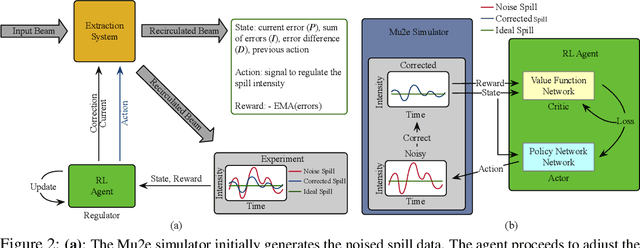Seda Ogrenci
Real-Time Cell Sorting with Scalable In Situ FPGA-Accelerated Deep Learning
Mar 16, 2025Abstract:Precise cell classification is essential in biomedical diagnostics and therapeutic monitoring, particularly for identifying diverse cell types involved in various diseases. Traditional cell classification methods such as flow cytometry depend on molecular labeling which is often costly, time-intensive, and can alter cell integrity. To overcome these limitations, we present a label-free machine learning framework for cell classification, designed for real-time sorting applications using bright-field microscopy images. This approach leverages a teacher-student model architecture enhanced by knowledge distillation, achieving high efficiency and scalability across different cell types. Demonstrated through a use case of classifying lymphocyte subsets, our framework accurately classifies T4, T8, and B cell types with a dataset of 80,000 preprocessed images, accessible via an open-source Python package for easy adaptation. Our teacher model attained 98\% accuracy in differentiating T4 cells from B cells and 93\% accuracy in zero-shot classification between T8 and B cells. Remarkably, our student model operates with only 0.02\% of the teacher model's parameters, enabling field-programmable gate array (FPGA) deployment. Our FPGA-accelerated student model achieves an ultra-low inference latency of just 14.5~$\mu$s and a complete cell detection-to-sorting trigger time of 24.7~$\mu$s, delivering 12x and 40x improvements over the previous state-of-the-art real-time cell analysis algorithm in inference and total latency, respectively, while preserving accuracy comparable to the teacher model. This framework provides a scalable, cost-effective solution for lymphocyte classification, as well as a new SOTA real-time cell sorting implementation for rapid identification of subsets using in situ deep learning on off-the-shelf computing hardware.
Beyond PID Controllers: PPO with Neuralized PID Policy for Proton Beam Intensity Control in Mu2e
Dec 28, 2023



Abstract:We introduce a novel Proximal Policy Optimization (PPO) algorithm aimed at addressing the challenge of maintaining a uniform proton beam intensity delivery in the Muon to Electron Conversion Experiment (Mu2e) at Fermi National Accelerator Laboratory (Fermilab). Our primary objective is to regulate the spill process to ensure a consistent intensity profile, with the ultimate goal of creating an automated controller capable of providing real-time feedback and calibration of the Spill Regulation System (SRS) parameters on a millisecond timescale. We treat the Mu2e accelerator system as a Markov Decision Process suitable for Reinforcement Learning (RL), utilizing PPO to reduce bias and enhance training stability. A key innovation in our approach is the integration of a neuralized Proportional-Integral-Derivative (PID) controller into the policy function, resulting in a significant improvement in the Spill Duty Factor (SDF) by 13.6%, surpassing the performance of the current PID controller baseline by an additional 1.6%. This paper presents the preliminary offline results based on a differentiable simulator of the Mu2e accelerator. It paves the groundwork for real-time implementations and applications, representing a crucial step towards automated proton beam intensity control for the Mu2e experiment.
 Add to Chrome
Add to Chrome Add to Firefox
Add to Firefox Add to Edge
Add to Edge